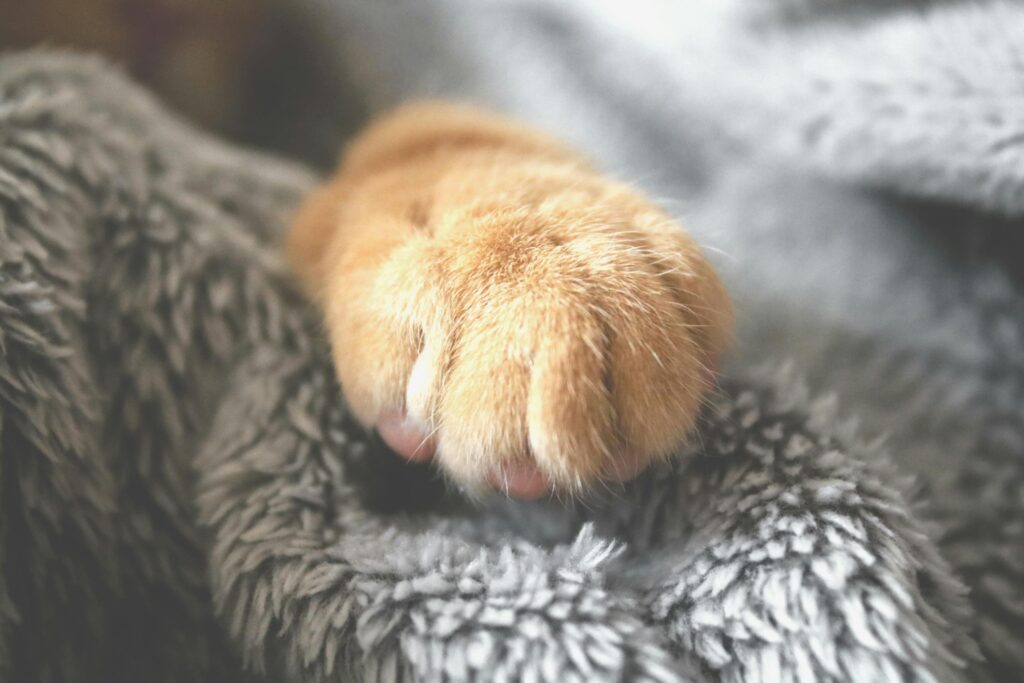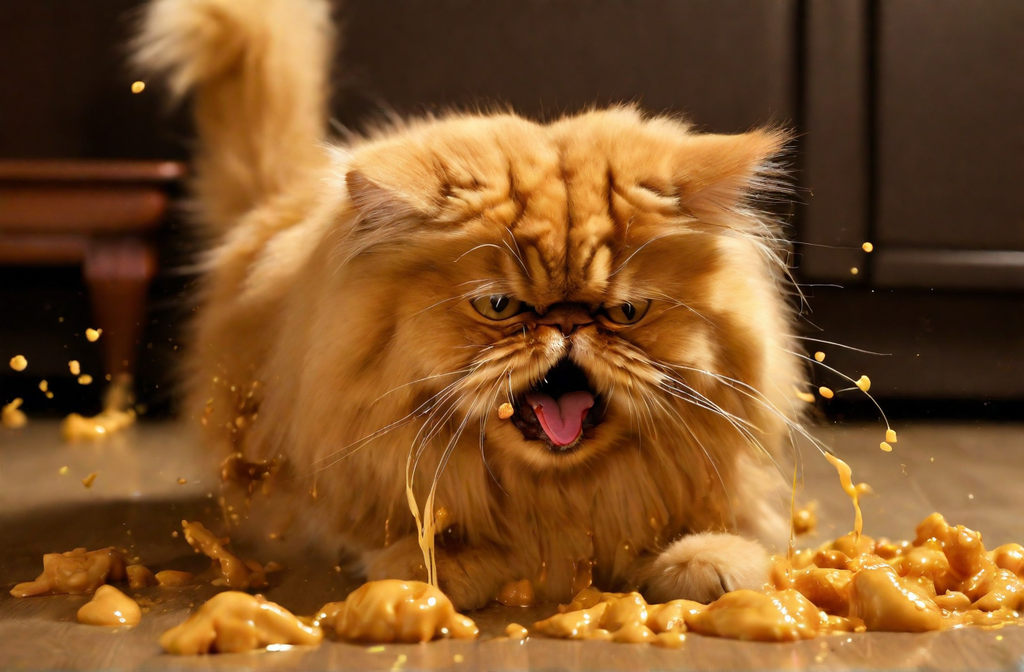Scratching posts shredded to bits, furniture ruined by those adorable but destructive claws – for many cat owners, these are familiar battlegrounds. While the instinct to scratch is natural and healthy for cats, it can certainly lead to frustration for humans who share their homes with these furry friends.
Two common approaches to address scratching behavior are declawing and using soft paws. But which option is right for you and your cat? This guide will delve into the pros and cons of both methods, helping you make an informed decision for a happy cat and a scratch-free home.
Understanding Why Cats Scratch
Before we jump into solutions, let’s explore the reasons behind feline scratching. Here are the key motivations:
- Sharpening Claws: Cats have a natural need to keep their claws sharp for hunting (even if they’re indoor cats!), climbing, and self-defense. Scratching helps remove the outer layers of dead claw sheaths, revealing the sharp points underneath.
- Marking Territory: Cats have scent glands in their paws. Scratching deposits their scent on vertical surfaces, marking their territory and communicating with other cats.
- Stress Relief: Scratching can be a way for cats to relieve stress and anxiety.
Declawing: A Controversial Practice
Declawing, also known as onychectomy, is a surgical procedure that removes the top part of a cat’s toes where the claw retracts. It’s important to understand that declawing is not simply a nail trim. It’s a major surgery that alters the anatomy of your cat’s paw.
Potential Benefits of Declawing
- Reduced Risk of Furniture Damage: This is the primary reason most cat owners consider declawing. It can eliminate the worry of ruined furniture and upholstery.
- Safer Interaction with Children: Some people believe declawing makes cats less likely to scratch children during play.
Significant Drawbacks of Declawing
- Painful Procedure and Recovery: Declawing is a painful surgery that can lead to complications like infection, lameness, and long-term pain.
- Behavioral Problems: Declawed cats may feel defenseless and resort to biting as a means of defense. They may also exhibit litter box avoidance due to discomfort, or become more stressed and anxious.
- Ethical Concerns: Many animal welfare organizations and veterinarians strongly oppose declawing due to the unnecessary pain and potential for behavioral changes.
The Legal Landscape of Declawing
Declawing is banned in many countries and municipalities around the world due to ethical concerns. In some areas, it may be illegal or require a veterinarian’s written justification for medical reasons. Always check your local laws before considering declawing.
Soft Paws: A Humane Alternative
Soft Paws are vinyl caps that glue onto your cat’s claws, essentially creating a “glove” that blunts the sharp point. They are a non-invasive, temporary solution to scratching problems.
Benefits of Soft Paws
- Painless and Reversible: Applying and removing Soft Paws is a painless process for your cat. The caps fall off naturally as your cat’s claws shed.
- Protects Furniture and Skin: Soft Paws effectively blunt the claws, minimizing damage to furniture and reducing the risk of scratches during play.
- Maintains Natural Behavior: Unlike declawing, Soft Paws allow cats to express their natural scratching behavior without causing destruction.
Drawbacks of Soft Paws
- Application and Maintenance: Applying and reapplying Soft Paws can be a time-consuming process for some cats who may dislike having their paws handled.
- Not Foolproof: Some cats are very skilled at removing Soft Paws with their teeth.
- May Not Be Suitable for All Cats: Active or outdoor cats might lose the caps more frequently.
Making the Right Choice for Your Cat
The decision between declawing and Soft Paws ultimately depends on your individual circumstances and your cat’s personality. Consider these factors:
- Severity of Scratching Behavior: If your cat’s scratching is causing significant damage or emotional distress, you might need a more permanent solution.
- Your Cat’s Temperament: Does your cat tolerate handling well? Soft Paws might be a good option if they cooperate.
- Lifestyle and Environment: Consider your cat’s activity level and access to the outdoors when choosing between Soft Paws and a more permanent solution.
Encouraging Positive Scratching
Regardless of the option you choose, providing your cat with appropriate scratching alternatives is crucial. Here are some tips:
- Invest in Sturdy Scratching Posts: Offer scratching posts in different textures and heights to appeal to your cat’
- Location is Key: Place scratching posts in high-traffic areas where your cat likes to spend time. Consider a scratching post near their favorite napping spot or by frequently scratched furniture.
- Variety is the Spice of Life: Rotate scratching posts with different textures like sisal, cardboard, and carpet to keep your cat interested.
- Positive Reinforcement: When your cat uses the scratching post, reward them with praise, treats, or playtime to encourage the desired behavior.
- Redirection is Key: If you catch your cat scratching furniture, gently redirect them to the scratching post with a toy or enticing scratching sounds.
- Address Underlying Issues: Sometimes, excessive scratching can be a sign of stress or anxiety. If scratching seems unusual, consult your veterinarian to rule out any medical conditions.
The Takeaway
Declawing should be a last resort due to the potential for pain and behavioral changes. Soft Paws offer a humane, temporary alternative, but require commitment and may not be suitable for all cats.
The best approach to managing scratching behavior involves a combination of providing appropriate scratching outlets, positive reinforcement, and redirection. By understanding your cat’s needs and offering them healthy ways to express natural instincts, you can create a harmonious home for both of you.
Additional Resources:
- The American Society for the Prevention of Cruelty to Animals (ASPCA): https://www.aspca.org/about-us/aspca-policy-and-position-statements/position-statement-declawing-cats
- The Humane Society of the United States: https://citythekitty.org/why-is-the-animal-humane-societys-declawing-position-statement-on-the-side-of-declawing-veterinarians/
- The Paw Project: https://pawproject.org/
Remember, a happy cat is a cat who can express their natural behaviors in a healthy way. By weighing all your options and focusing on positive reinforcement, you can find a solution that keeps your furniture safe and your feline friend content.
FAQs
- Is declawing really that painful for cats?
Yes, declawing is a surgical procedure that removes part of the toe bone. It can cause significant pain during recovery and potentially lead to long-term discomfort.
- Can’t I just trim my cat’s claws regularly?
Regular nail trimming can help blunt the points of your cat’s claws, but it won’t address the natural behaviors behind scratching, like marking territory and sharpening claws.
- Are Soft Paws safe for my cat?
Yes, Soft Paws are made from non-toxic materials and are generally safe for cats. However, some cats might ingest them if they come loose.
- How often do I need to replace Soft Paws?
Soft Paws typically fall off naturally as your cat’s claws grow and shed. You may need to replace them every 4-6 weeks, depending on your cat’s activity level.
- What if my cat hates having their paws touched?
Applying Soft Paws might be challenging with a cat who dislikes paw handling. Consider enlisting a friend or family member for help, or consult your veterinarian for tips.
- Are there any alternatives to Soft Paws?
Soft claws are similar nail caps made from a softer material. There are also sprays designed to deter scratching, but these may not be effective for all cats.
- My cat is declawed. Can they still use a scratching post?
Yes, even declawed cats retain the instinct to scratch. Providing a scratching post is important for exercise and mental stimulation.
- Will my declawed cat become more likely to bite?
Unfortunately, yes. Declawed cats may feel defenseless and resort to biting as a means of defense or expressing frustration.
- Can declawing cause litter box problems?
Yes, declawing can be painful, especially when using the litter box. Some cats may develop litter box aversion due to discomfort.
- What if my cat has a medical condition that makes scratching difficult?
If your cat has arthritis or other conditions affecting their paws, consult your veterinarian. They might recommend pain medication or special scratching surfaces.
- Is declawing ever a good option?
Declawing should be a last resort after exploring all other options. Some shelters might declaw feral cats before adoption to prevent injuries, but this practice is becoming less common.
- Are there any legal restrictions on declawing?
Declawing is banned in many countries and some municipalities within the US. Always check your local laws before considering the procedure.
- How much does declawing cost?
The cost of declawing can vary depending on your location and veterinarian. Expect to pay anywhere from $300 to $1,000.
- How much do Soft Paws cost?
Soft Paws are a relatively affordable option. A pack typically costs around $10-$20 and can last for several months depending on how often they need replacing.
- Where can I buy Soft Paws?
Soft Paws can be purchased from most pet stores, online retailers, and some veterinary clinics.







